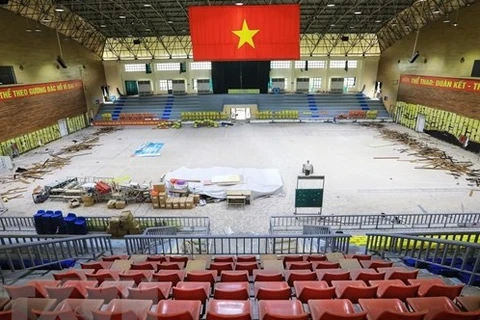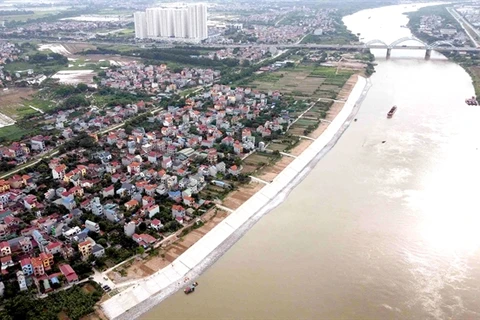 Hanoi has seen a recovery in industrial production and trade in the first two months of this year as the capital city followed safe adaptation and effective control of COVID-19. (Photo: VNA)
Hanoi has seen a recovery in industrial production and trade in the first two months of this year as the capital city followed safe adaptation and effective control of COVID-19. (Photo: VNA) The capital city’s index of industrial production was estimated to increase by 4.6 percent in the first two months of this year.
Specifically, the manufacturing and processing industry rose by 4.8 percent, power production and distribution by 1.8 percent, and water supply and waste treatment by 4.3 percent.
Industries that saw significant increases included paper production by 49.7 percent, wood processing and wood products by 20.7 percent, electronic products and computers by 11.9 percent, rubber and plastic products by 11.1 percent.
The capital city witnessed a rise of 30.9 percent in export to reach a value of more than 2.6 billion USD in January – February, of which the domestic sector’s export value was estimated at 1.4 billion USD, up by 33.9 percent while the foreign direct investment (FDI) sector saw an increase of 27.7 percent in export value.
The total retail sale of goods and services was estimated at 109 trillion VND (4.77 billion USD) in the first two months of this year, representing a rise of 9.9 percent against the same period last year.
According to the municipal Statistics Department, as Tet (Lunar New Year) holidays fell in early February, trade activities slightly dropped against the previous month but were more robust over the same period last year.
The capital city also reopened several business activities, including tourism, restaurants and hotels, which helped drive the recovery of trade and services.
After the Tet holiday, industrial production companies in the city did not face a serious shortage of workers, with the number of employees working at the companies as of the end of February 1.2 percent higher than the previous month and 0.3 percent higher than the same period last year.
Businesses were gearing up to reach their targets with a determination to capture opportunities arising from the economic recovery.
Nguyen Doan Thang, General Director of Rang Dong Light Source and Vacuum Flask Joint Stock Company, said that the company would renovate its business model together with actively expanding exports and speeding up the digital transformation process.
Aiming to stimulate domestic demand, boost sales, promote production and consumption of goods and services to accelerate economic recovery, the municipal People’s Committee issued Plan No 39/KH-UBND to organise a trade promotion programme in 2022.
The city will raise solutions to enhance the competitiveness of enterprises, speed up administrative reforms with the focus on applying information and technology in handling administrative procedures, and develop policies to promote production and exports, according to the plan.
The city set the target of a 5 percent increase in export value in 2022.
The capital city said that it was essential to enhance the efficiency of trade and investment promotion activities.
Focus would also be placed on developing human resources and attracting investment in the infrastructure system.
Enterprises were used to strengthen digital transformation and invest in automation and green production models to enhance competitiveness and participation in the global production chain.
Tran Phuong Lan, acting director of the Hanoi Department of Industry and trade, said that the department would join with relevant agencies to stimulate demand and promote trade in line with existing regulations on safe adaptation and effective control of COVID-19.
VNA






















